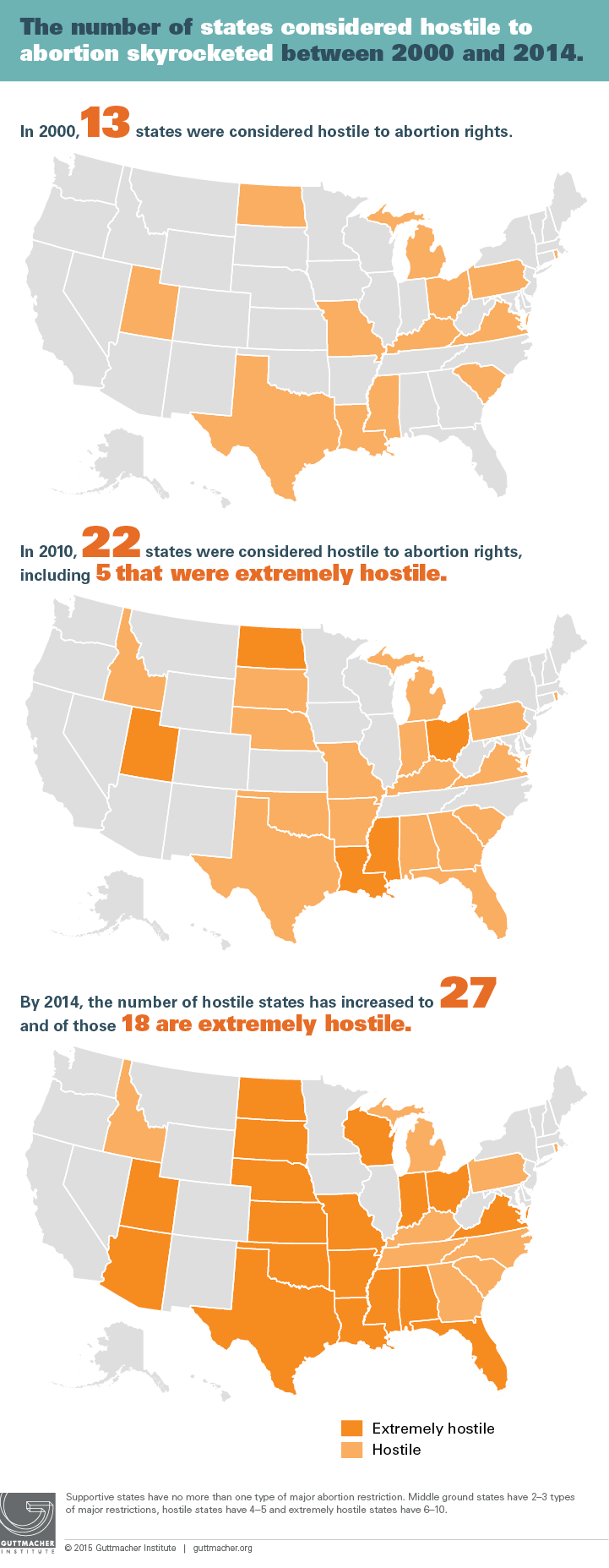Texas’ abortion laws are in the spotlight right now, as the Supreme Court heard arguments last week challenging existing legislation that imposes stricter rules on abortion doctors and clinics. Bt it’s not just Texas: Over the past five years, states have been especially active in passing laws restricting their residents’ access to abortions.
Between 2011 and 2015, states passed 288 regulations that made it more difficult for people to get abortions, the biggest spike in the number of such rules since Roe vs. Wade was decided, according to data from the Guttmacher Institute, a group that researches and advocates for contraception access. Examples include laws that mandate waiting periods or counseling before getting an abortion; laws that ban most abortions after an early point in pregnancy; and laws like Texas’, which require high standards for abortion providers and clinics that aren’t necessary for safety.
Laws aimed at regulating providers and clinics more strictly have been especially popular recently. That’s in contrast to the past, when many anti-abortion access laws were aimed at patients—requiring that abortion-seeking minors tell their parents, for example, or limiting people’s ability to pay for an abortion with Medicaid.
While pro-choice lawmakers have been unusually active as well, they still don’t come close to matching their opponents in the number of regulations passed. Nevertheless, in 2014, lawmakers introduced 95 measures aimed at making abortions easier to obtain, which marks “more positive measures than in any year since 1990,” the Guttmacher Institute reports. Those laws included provisions easing past restrictions and imposing buffer zones around abortion clinics in which people can’t protest. Four of those measures passed.
Overall, since 2011, more states are home to numerous regulations that make abortions more difficult to obtain. The maps below are from the Guttmacher Institute, which considers a state that has four or more abortion access-restricting laws to be “hostile to abortion rights.” “Extremely hostile” states have six or more abortion-restricting laws.






